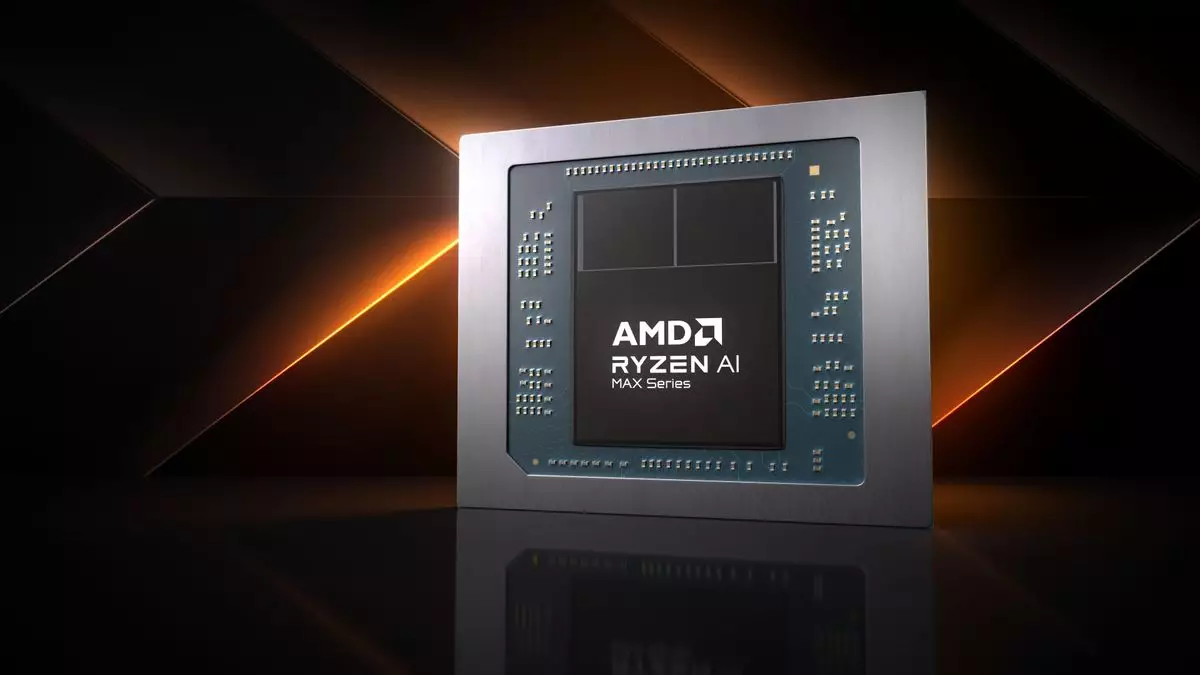AMD’s Strix Halo is garnering attention as one of the most significant integrated processors (APUs) heading into the market. With expectations running high among enthusiasts and mainstream users alike, the recent benchmarks from 3DMark Time Spy have ignited discussions about its potential performance capabilities. While initial results echo what was seen during its Geekbench introduction last year, they also suggest that the performance may not quite meet the elevated expectations set by AMD’s earlier statements.
Recent posts from Baidu forums revealed benchmark scores that caught the eye of many industry observers. Among the scores, the device reportedly showcased a GPU score of 10,106 and a CPU score of 5,571 in 3DMark Time Spy. For comparison, this places the Strix Halo APU, particularly its Radeon 8050S integrated GPU—which might be better identified as the 8060S AI Max+ 395—around a notable performance threshold. It overshot the average scores of laptops featuring the NVIDIA RTX 4050 but fell just short of those utilizing the RTX 4060.
Understanding what these numbers mean goes beyond mere comparisons. 3DMark serves as a reliable gauge for graphical capabilities, but it’s crucial to remember that this benchmark cannot single-handedly define overall gaming performance. With a wider array of games tested, the true efficiency and capability of the APU will become clearer. Nonetheless, these early benchmarks provide a first glimpse into how AMD’s flagship APU may stack up against established discrete graphics options in laptops.
The implications of the scores are compelling. If the performance predictions hold up in real-world gaming scenarios, the Strix Halo APU could deliver performance on par with GTX 4060-equipped gaming laptops, all while being housed within a compact, integrated format. The absence of a dedicated GPU means that efficiency and optimization are crucial; the Strix Halo is expected to bring a balance between robust performance and respectable power management, particularly important for gaming laptops and the forthcoming tablet from Asus.
Although there was considerable industry speculation that Strix Halo would outperform NVIDIA’s offerings, particularly with early predictions stating that it might rival an RTX 4070-class performance, these latest benchmarks suggest a more moderate reality—placing it securely in the RTX 4060 category instead. This outcome indicates that while the Strix Halo is an impressive piece of technology, it may not entirely revolutionize the integrated GPU landscape as some had hoped.
The way that Strix Halo is engineered adds another layer of complexity to the discussion. AMD reportedly undertook multiple revisions to refine the APU, diving deep into its microarchitecture to enhance efficiency. Utilizing a new interconnection method among the Zen 5 CPU components, AMD aimed to tackle challenges seen in the Ryzen 9 9950X, particularly concerning power efficiency.
While this bespoke design does indeed promote better power management—an asset for consumers concerned about battery life—there are caveats. The Strix Halo can be configured with a wattage limit of up to 120 W, which may lead to significant variations in performance based on cooling solutions and design implementations in the final product. This adaptability may be beneficial for content creators and gaming users who utilize higher power settings at the expense of battery life.
As AMD continues to refine its offerings, the early benchmarks of the Strix Halo APU provide critical insights into its design and performance potential. While it may not completely eclipse existing discrete GPU options, it represents a solid step forward in integrated processing power. The ongoing developments will determine if AMD can meet the high expectations that have surrounded the Strix Halo since its inception. Looking ahead, users will eagerly await further testing across a broader range of gaming scenarios to fully assess whether this new APU can fulfill its promise in real-world environments.

